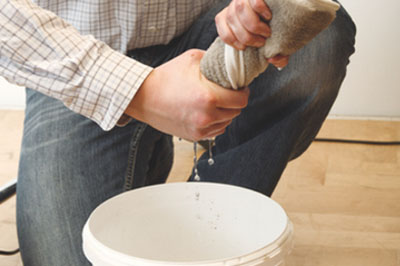Cleaning Up
Clean Right. Clean Properly.
Cleaning up can be boring and tedious but is essential to prolong the lifespan of your tools, and yourself.

Extend the life of your tools
Keeping them fresh for best results
Brushes and rollers should be cleaned with Osmo Brush Cleaner and then rinsed with warm water.
Cleaning oils out of the fibres and bristles uses a substantial amount of water or solvent. To reuse the brush or roller again for the same job then an alternative to washing is to place them in an airtight plastic bag, applying masking tape around the handle to keep the air out. This will keep it supple over-night.
Once you have finished using the roller, clean with Osmo Brush Cleaner and then rinse with warm water. Shake off excess water and wrap in a piece of clean paper towel and secure with masking tape.
Brushes should be stored flat. Standing brushes on their ends will bend the bristles and spoil them. Rollers should be stored hanging up to avoid crushing the fibres.

Washing Your Hands
‘Handy’ tip to save time
No matter how careful you are there is likely to be some oil left on your hands after application of a product, especially when cleaning up your tools and accessories. Unless you are wearing gloves, of course.
We find that the best way of cleaning your hands is to first use vegetable oil which will quicky remove the oil from your skin. Removing the vegetable oil can be done with ordinary dish soap. Alternatively, we recommend rinsing with warm water and soap or for minor cleaning, use Osmo ‘Easy Clean’ hand cleansing wipes.

Keep Your Mops Clean
Just as important as your floors
One advantage of microfibre mops over cotton counterparts is how easy they are to clean. They simply get thrown in the washing machine. Wash dust and wet microfibre mop heads with a gentle detergent in hot water.
They should never be washed with bleach or fabric softener. Microfibre mop heads should also be rinsed before going into the dryer. End users should treat microfibre similar to their delicate clothes at home and dry on low heat. Temperatures above 140 degrees and dryer sheets can damage the fibres.


